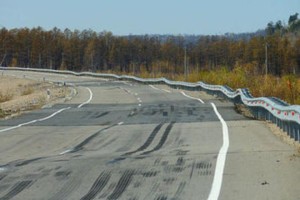
Russia’s Far East, a region that is farthest from Moscow with more than 6,000 kilometers between them, has been going through difficult times for quite a while now. Since 1990, when the last population influx was registered, the region’s population has decreased by more than 20 percent with 90 percent of it being due to the migration outflow – not to natural population decline. A considerable part of the population leaves the region to seek jobs and a better life.
Making a speech at the 2016 Eastern Economic Forum, Putin promised to turn Vladivostok, the country’s largest city on the Pacific Ocean coast, into a Russian San Francisco. Our dreamer in the Kremlin must be counting upon investments from Japan and China, including a joint development of the disputed Kuril Islands. One has a hard time believing that though.
This year, a Federal Law No 119-FZ from May 1, 2016 dubbed “On the Far Eastern Hectare” was adopted on the government’s initiative. However, the attractive idea of giving away land for free to anyone interested is confronted by the greed of corrupt officials. Right after the law had come into effect, opposition activist Aleksei Navalny exposed fraud schemes used by officials with regard to allocated land plots, when, for example, the most attractive ones turned out to be occupied within minutes of the entry into force of the aforementioned law. This story just gets funnier as it goes. According to the project’s official website, in three months only 379 people out of 6 million who still live in Russia’s Far East submitted requests for complimentary land plots.
A few years ago, when skyrocketing oil prices provoked an investment urge, there were plans to build automobile-manufacturing plants in the Far East in order to push out of the market inexpensive Japanese right-hand-drive used cars that are unsafe on Russian roads with right-hand traffic. These ideas have since been well forgotten, and the region’s residents still widely use right-hand-drive cars. Besides, it is quite hard to leave the region by car since the only freeway that connects Vladivostok with Russia’s European part is quickly deteriorating.
Residents of the Far East have traditionally been earning their living by forest harvesting and fishing. However, the region’s forest industry has been in decline despite the fact that the Russian Far East accounts for more than 40 percent of the country’s forest lands and 25 percent of timber resources. Furthermore, the shadow sector of the economy accounts for 70 percent of timber operators’ work. As far as fishing industry is concerned, 90 percent of the catch is exported without processing, and the amount of such exports has been steadily increasing.

This is apparently the reason why the idea of setting up an offshore zone in the country’s Far East has been raised even on the official level. Russian authorities have their reasons: a billion and a half Chinese people and 130 million Japanese will be happy to use vast Far Eastern lands rich in forests and fish and devoid of Russian population as a raw-material-producing appendage and a junkyard for used cars.





